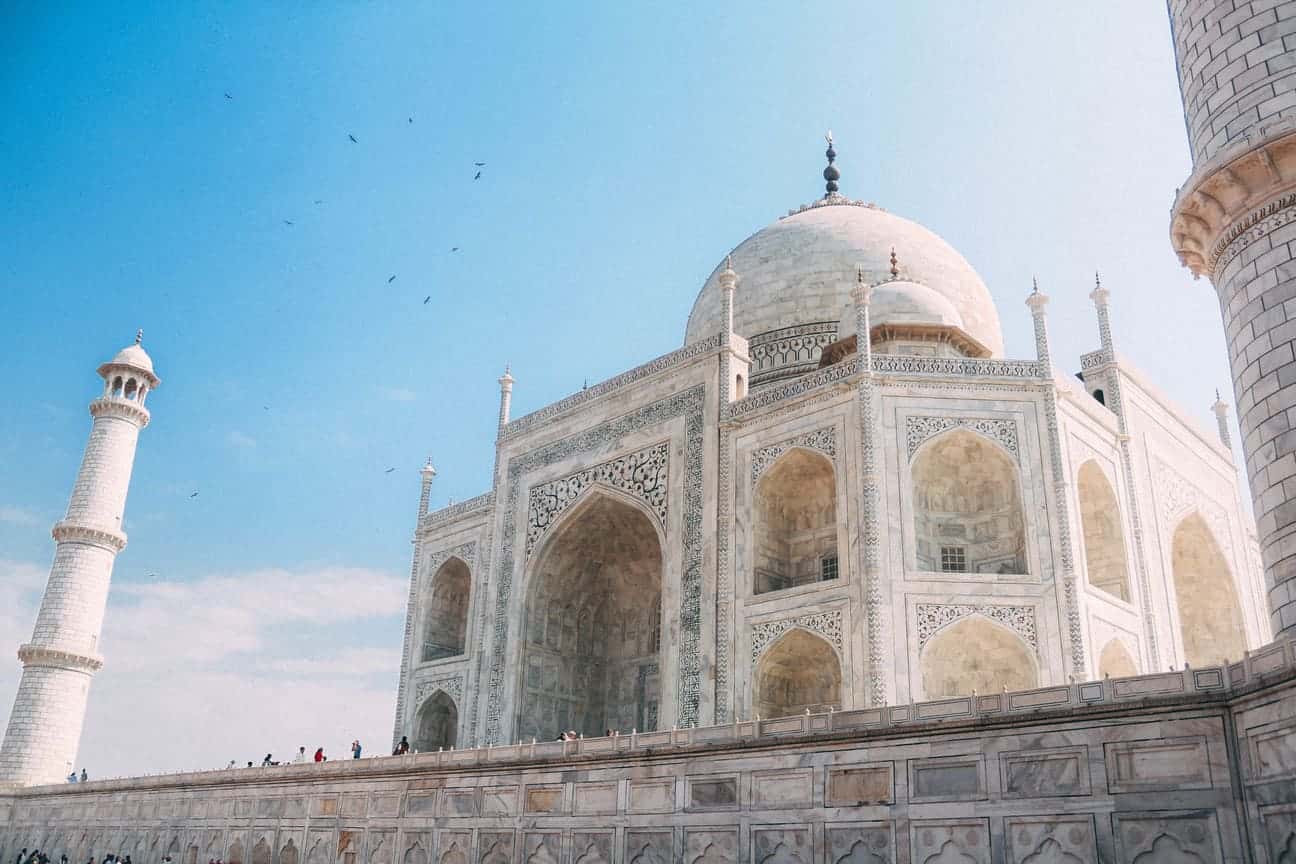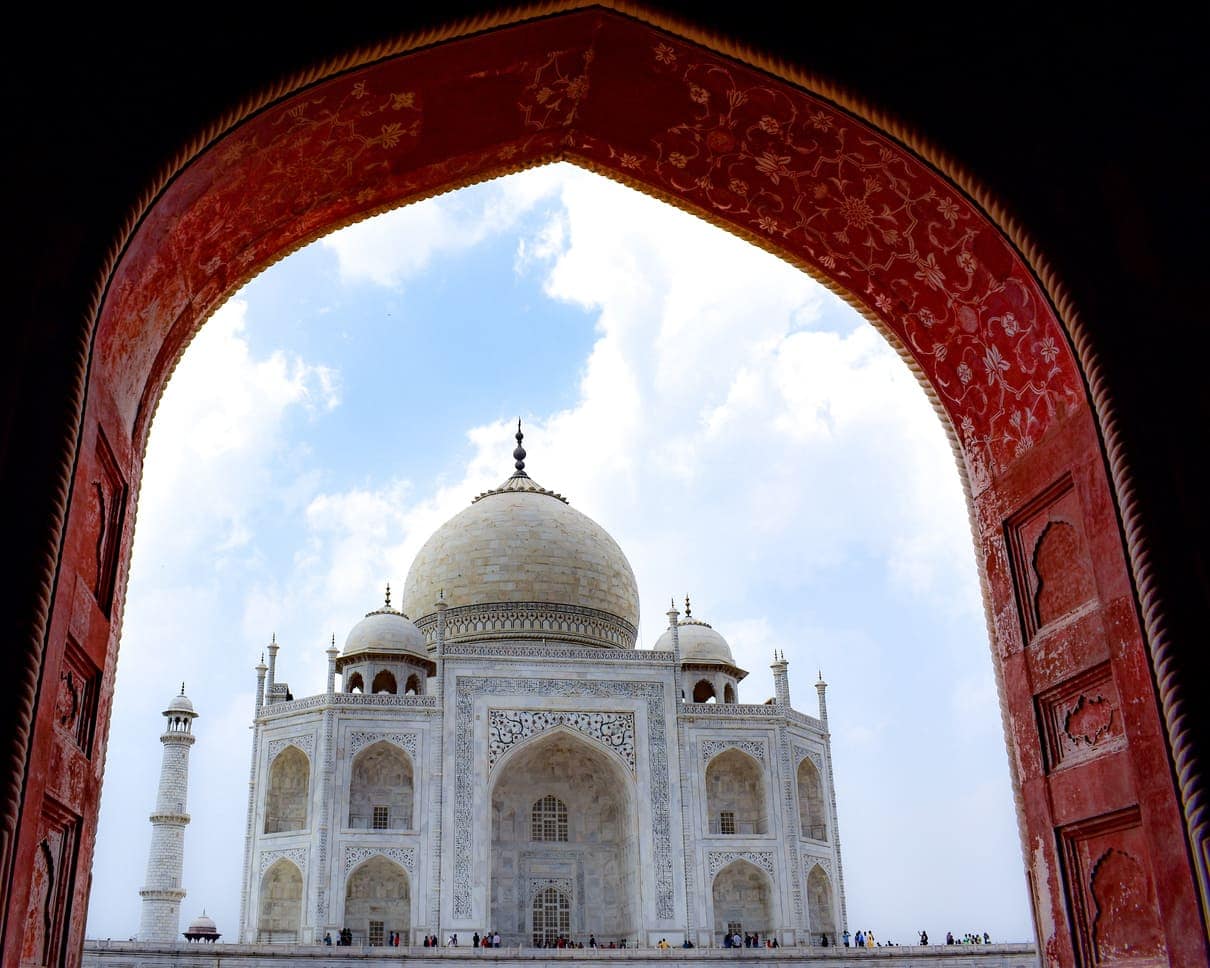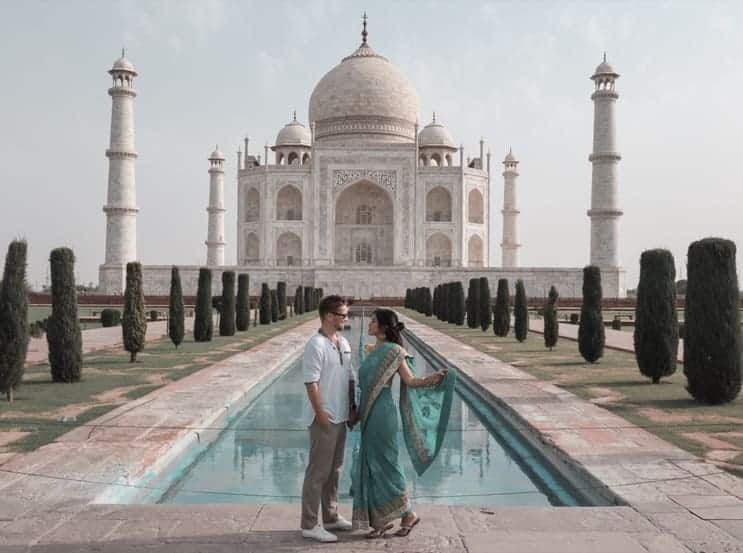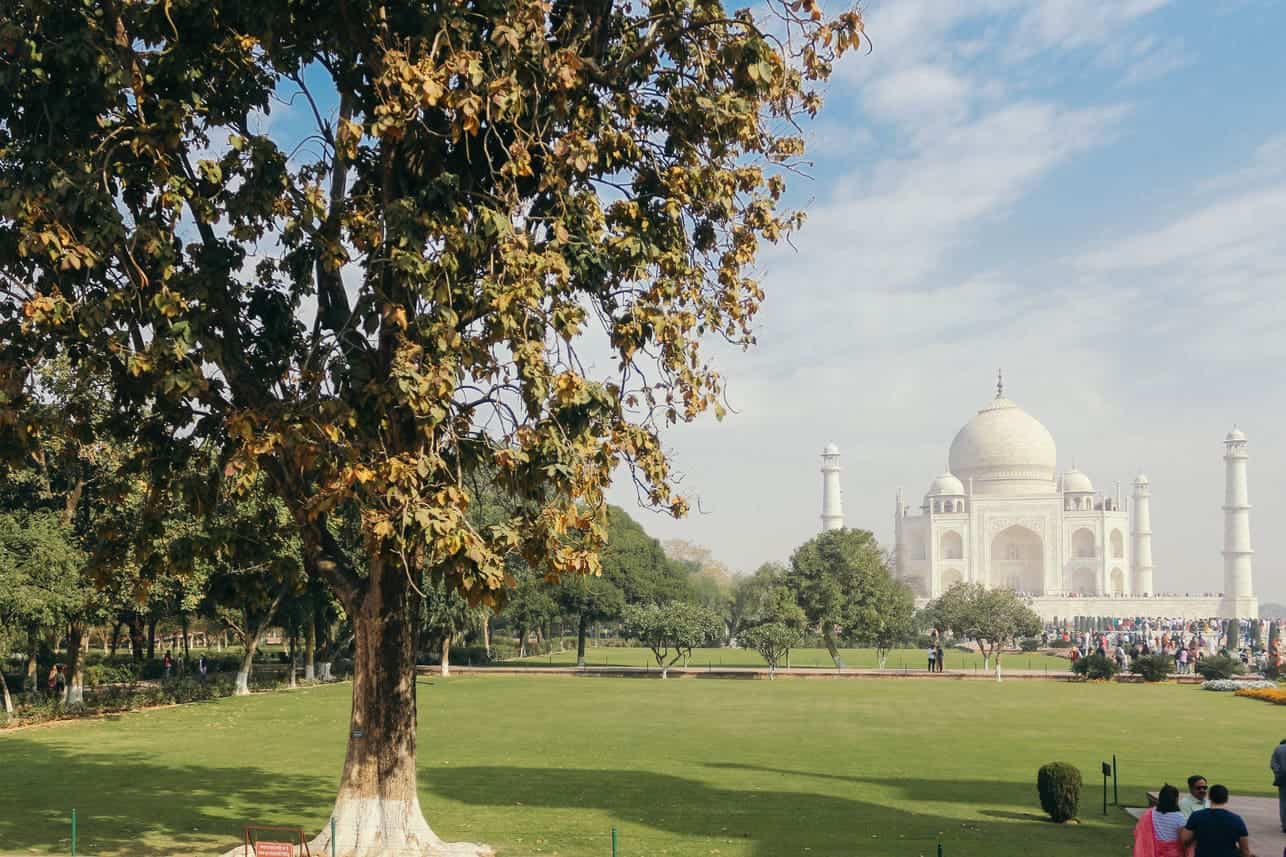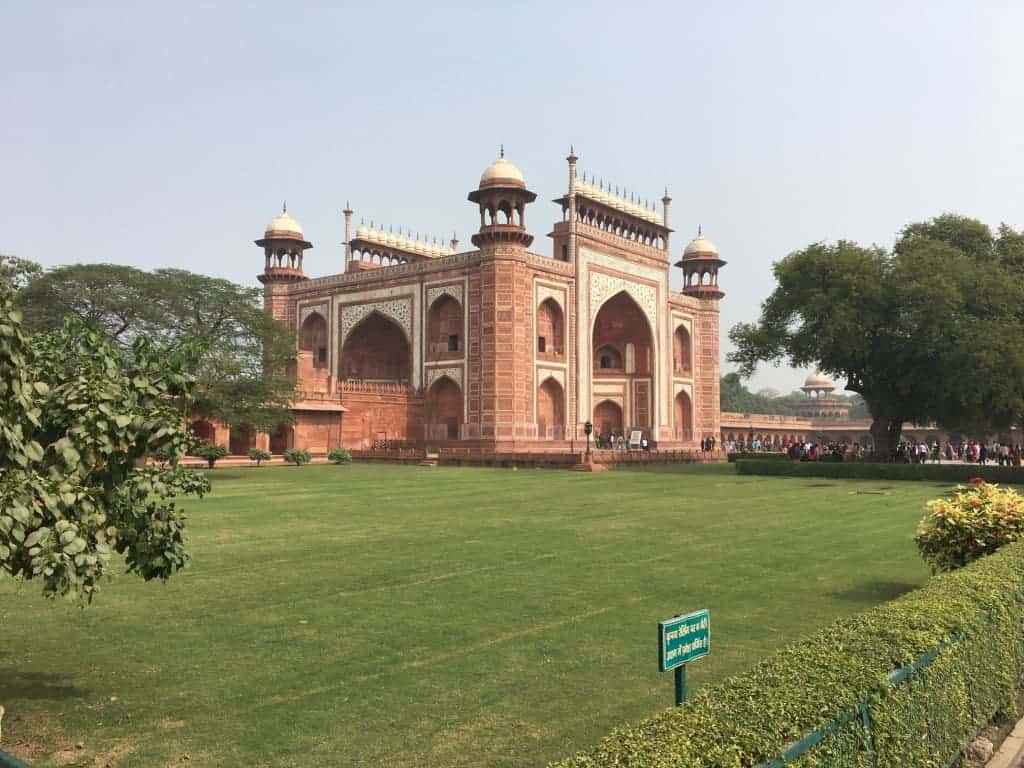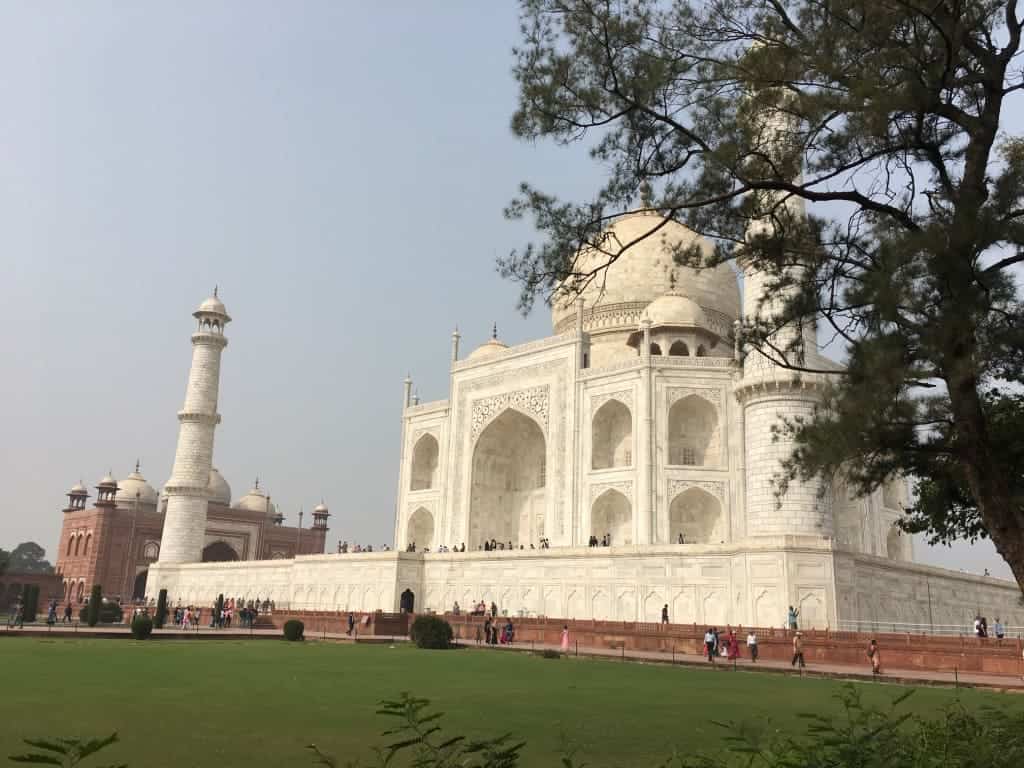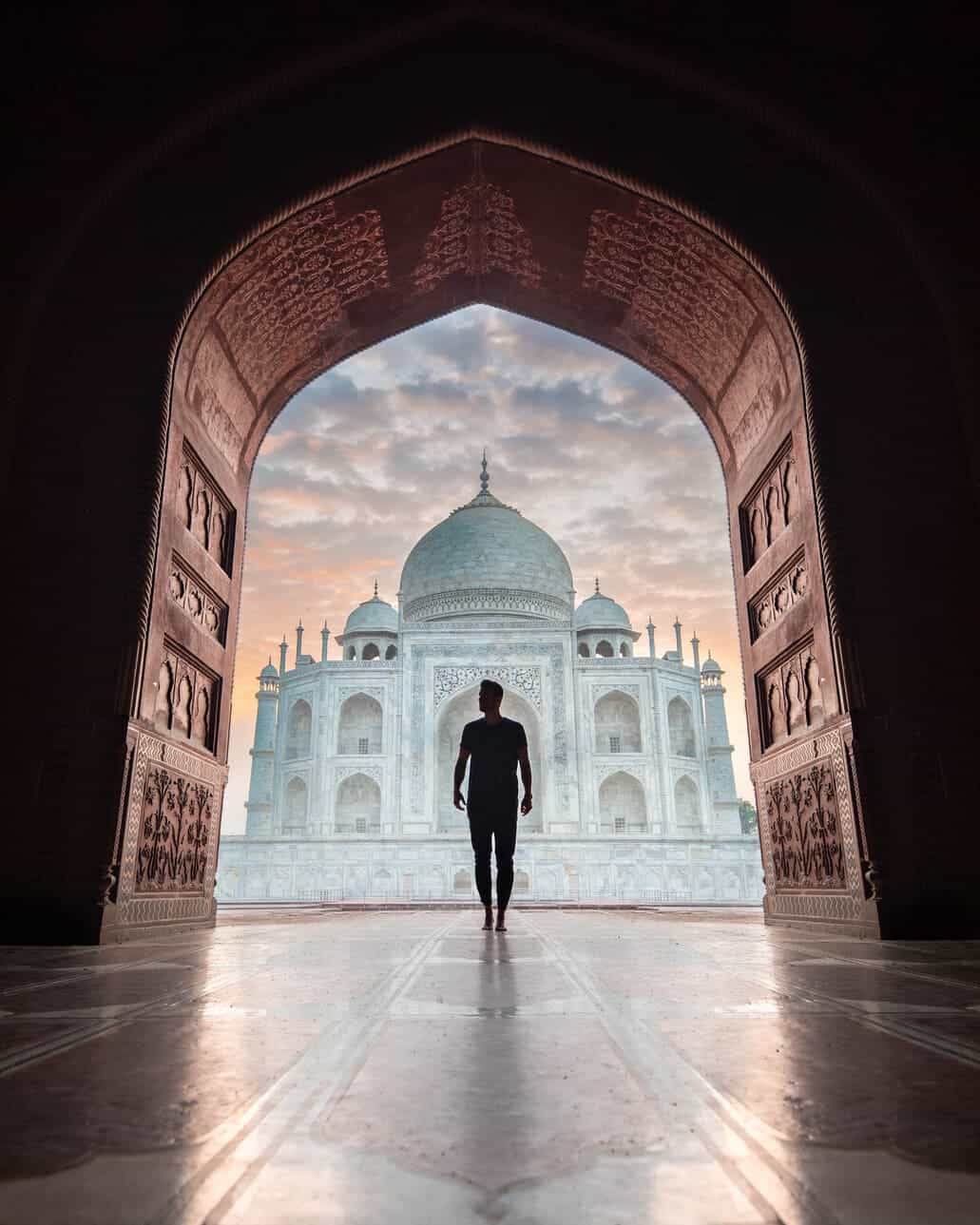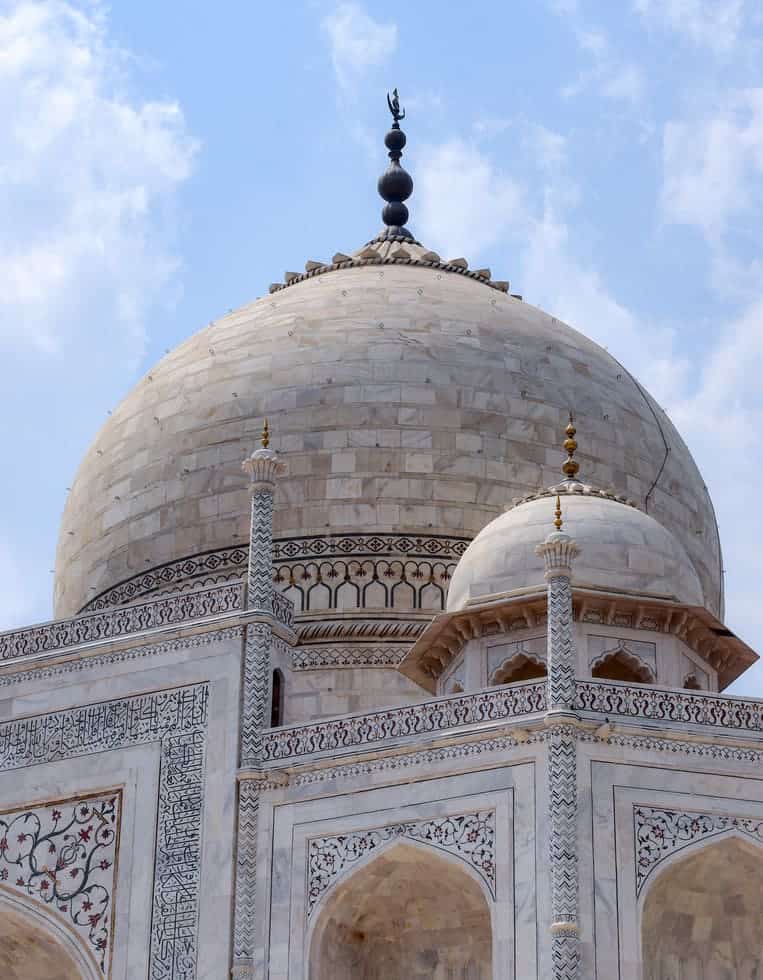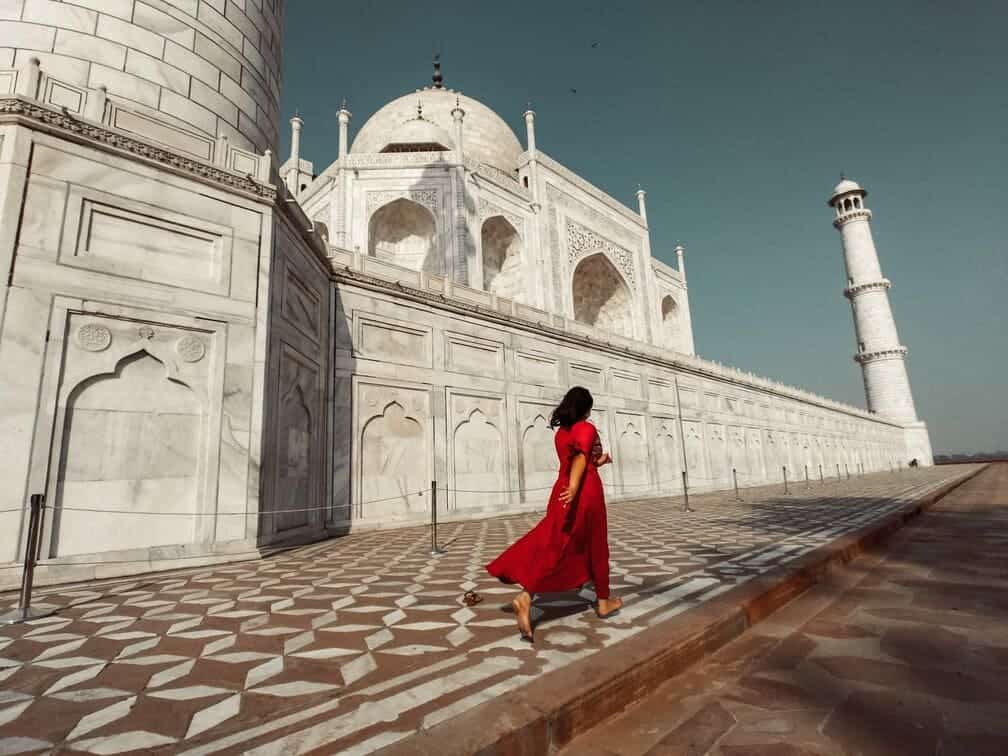When Amazon founder, Jeff Bezos, made a surprise visit to India in January 2020 – his first in six years – it was expected that it would be business as usual.
However, in addition to meeting the country’s corporate leaders, the world’s richest man and leading technocrat took time out to visit the iconic Taj Mahal.
His pose in front of the monument’s shimmering reflective pool along with his girlfriend Lauren Sanchez soon went viral. Netizens complimented the power couple for their much loved-up photo with the imposing white marble structure in the backdrop.
Incidentally, Bezos and Sanchez have joined the ranks of other global celebrities who have fallen in love with this renowned monument of love.
From Prince William and Princess Kate to Facebook’s founder and CEO Mark Zuckerberg to actor Leonardo Di Caprio, Orlando Bloom, Tom Cruise, Ben Kingsley to former US President Bill Clinton and his daughter Chelsea, to Canadian Prime Minister Justin Trudeau and his family – few have been able to resist the allure of the Taj Mahal.
A LITTLE ABOUT THE TAJ MAHAL
The story of the Taj Mahal has been epitomized in most Bollywood movies as one of eternal love. And why not?
It symbolizes the romance between Mughal emperor, Shah Jahan, and his third queen, Mumtaz Mahal, who died in 1631 while giving birth to their 14th child.
Distraught with her demise, the emperor decided to build a mausoleum to house her remains and construct a grand symbol of their undying affection for each other.
Taj Mahal’s construction began in 1632 along the banks of the river Yamuna in Agra. It took 20 long years and the labor of over 20,000 workers before it was completed.
Shah Jahan told the architects that the edifice should symbolize the purity of his relationship with Mumtaz Mahal, which is why only the purest ivory-white Makrana marble was chosen for its construction.
Intricate designs ornamented with semi-precious stones like lapis lazuli, jade, crystal, and turquoise are embedded by hand on the walls of the Taj Mahal as well as the red sandstone structures next to it. When the sun rays hit these walls, its reflection on the stones makes the edifices sparkle like a diamond.
HERE LIES ROYALTY
A ceremonial tomb of Mumtaz Mahal is housed within an octagonal chamber of the mausoleum, while her actual remains lay undisturbed a level below. Following the demise of Shah Jahan, his remains were also buried alongside that of his beloved.
The breath-taking mausoleum aside, the other highlight of the Taj Mahal complex is its manicured gardens. These ‘Charbagh’ (four gardens in Hindi) are perfectly divided into quadrangles by water bodies.
The reflective pool, which reflects the grandeur of the Taj Mahal, is a favorite spot for tourists seeking to document their visit with a photo.
In 1983, UNESCO designated Taj Mahal as a World Heritage site and it remains on the list of the ‘New7Wonders of the World’. Is it any wonder then that this monument witnesses a huge number of footfalls daily?
According to information provided by the Indian Ministry of Tourism, almost 6.5 million people visited the world heritage site in 2018, which is 100% more than the previous year. This underlines its enduring popularity amongst Indian and international tourists.
Best Time to Visit Taj Mahal
Most tourist destinations have an ideal time or season when it is best to pay it a visit. But not the Taj Mahal. Any time of the year is good to view this architectural wonder – as the sun treks across the sky and lights up the edifice, the monument seems to change colors and appear mysteriously different each time!
What is the best month to visit the Taj Mahal? The best time to visit Agra is from October to March. This is when the festive season is in full swing, starting with Diwali. It is spectacular to see the city decked up during the Festival of Lights and savor the local cuisine.
This celebratory season extends till March, when the Festival of Colours, or Holi, is celebrated with great gusto.
The 10-day long Taj Mahotsav is also organized during February to showcase the heritage of India and that of Taj Mahal and Uttar Pradesh.
Exhibitions by native artisans, song, dance and drama performances by renowned artists, processions led by animals like elephants and camels, regional enactments like Nautanki, Lavani, Kuchipudi, Bharatnatyam, etc., are held.
Also, the climate during the winter months till March is around a pleasant 30°. This makes walking around the complex quite enjoyable, whether at sunrise, sunset, during nights or even throughout the day.
During the summer months, the weather gets very hot, making these excursions relatively tiresome. However, even during this temperature, it is agreeable inside the mausoleum, since the white marble acts as insulation against the heat.
EN ROUTE TAJ
The Taj Mahal is located in Uttar Pradesh’s Agra city, which is around 200 kilometers from New Delhi. As India’s capital, New Delhi is well connected to the rest of India through regular flights and train services.
One can take a direct train from New Delhi to Agra, for a reasonable fare of around INR 300, or opt for a state transport bus, which costs around INR 400 per person.
Air-conditioned private buses also ply on this route daily, charging around INR 700 per person, halting for a short break en route. Alternatively, one can hire a cab to drive down the Yamuna Expressway and reach Agra within three hours.
Many tour operators also provide a one-day private tour package that includes a visit to the Taj Mahal, Agra Fort and the tomb of Itimad-ud-Daulah.
However, this often offers a couple of hours at the heritage site. So, if you plan to spend more time gazing at the wondrous beauty, this package might not suit you.
Upon reaching Agra, one can select from different transportation options to reach Taj Mahal. These range from prepaid cabs, taxis, auto-rickshaws and cycle rickshaws.
Recently, it was discovered that the edifice’s marble had started discoloring due to pollution. Following this, the state government banned diesel and petrol vehicles in the Taj Mahal’s vicinity.
So, tourists can either walk the final 10 minutes to its entrance or take battery-operated vehicles, rickshaws and horse-pulled tongas.
Where to Stay in Agra
As a tourist destination, Agra has many stay options to suit various traveler needs, ranging from Airbnb accommodations to budget and upscale hotels as well as homestays. The closest Airbnb accommodation is the modest Sukoon Homestay, which is a kilometer from Taj Mahal’s Western Gate.
If money is no object, then the lavish Oberoi Amarvilas Agra is a fabulous choice to make memories of your trip, since most rooms present a view of the monument.
Guests can take a golf cart to traverse the 600 meters to the Taj Mahal and the concierge desk can help with the ticket bookings for dawn and night viewings.
Other luxurious five-star properties near the Taj Mahal include the expansive ITC Mughal Agra, the DoubleTree by Hilton, Trident Agra, TajView SeleQtions, Courtyard Agra, Holiday Inn Agra MG Road, The Grand Imperial, Radisson Hotel Agra, etc., with prices ranging from INR 4000 to INR 8500 per room per night.
If you would like to get a taste of how the locals live, you can opt for homestays like the colorful Coral Homestay. Located very close to the Eastern Gate, it is run by a couple who are professional tourist guides. In addition to giving helpful tips about getting to the Taj Mahal and around the city, they also provide homely meals.
For travelers who would like to socialize with fellow tourists, a hostel is a great possibility. One such property is Joey’s Hostel, which is a 10-minute walk from the Taj Mahal and offers a view of the edifice from its rooftop restaurant (which is a great option if you could not go for a Night Viewing tour).
Providing accommodation only for adults, it has a shared lounge and kitchen, lockers, private bathrooms and barbecue facilities on the terrace.
You can fraternize with other visitors while playing darts in the game room, or during movie nights. You can share beds in a dormitory accommodating four to eight people for around INR 600, or book a private room for around INR 2800.
There are budget hotels galore, too, in the vicinity of the mausoleum. For instance, there is the Hotel Sidhartha, which is just a few minutes of walk from the Western Gate.
A standard air-conditioned twin room with attached bathroom, TV, breakfast and other basic amenities in this hotel costs INR 2400, while the same room with air conditioning and a fan costs INR 1100.
While booking accommodation in Agra, it is recommended to select one in close vicinity of the Taj Mahal. This way you can walk to the monument early in the morning for a sunrise view before the crowds queue up. Similarly, you can watch the splendid sunset view and then return just before closing hours.
OPEN FOR ALL
The Taj Mahal is open to public visits 30 minutes before sunrise until half an hour before sunset. It is closed on Fridays, which is the holy day for Muslims.
The best days to visit it is from Monday to Thursday when it is relatively less crowded as compared to the weekends. Crowds often throng the complex on local holidays, so plan your visit after checking the list of public holidays in the state.
If you are a morning person, then you are in luck, because dawn is the best time to visit the Taj Mahal. The queues just start building up, so you can breeze through the entrance and security checks with greater ease and speed.
Additionally, the sight of the majestic structure in the morning light is one to behold, as the sun rays bounce off the pristine white marble, and make it stand out in strong contrast to the arched red sandstone gateway.
Dusk is an equally great time to view the Taj Mahal and capture some nice photos. The orange hues of the setting sun appear to set fire to the marbled mausoleum!
There is a magical aura to viewing the almost translucent Taj Mahal silhouetted against a full moon, accentuated by the shimmer of the dark pool waters.
This enchantment can be witnessed during the night viewing of the monument on every month’s full moon nights and two nights before and after a full moon (other than Friday or during the month of Ramzan).
To restrict the number of people in the complex in the late hours, batches of eight with up to 50 people in each are permitted entry. Tourists cannot take video cameras, or enter the monument, though they can watch it from afar.
PAY FOR VIEW
The Taj Mahal has three entry gates – the Southern, Western and Eastern – and the gateway, which is an entrance hall. The Southern Gate is currently closed, while most Indians prefer the Western gate, resulting in long queues.
Though there are exclusive ticket counters for non-Indians at the Western and Eastern Gate, most foreigners prefer the latter, since it has shorter queues, many hotels in the vicinity and there is a parking facility near Shilgram ticket booking center.
Tickets are available at these gates an hour before sunrise and are sold 45 minutes till sunset. Since the rates for Indians and non-Indians are different, they have separate queues for both.
What are the entry fees of the Taj Mahal?
Foreign tourists, except those from SAARC and BIMSTEC countries, have to pay INR 1100, while those from SAARC and BIMSTEC nations are charged INR 540.
Along with the tickets, these visitors receive a bottle of water, shoe covers, a traveler map of the city, bus or golf cart service to the entry gate and speedier entry into the complex vis a vis the locals.
Indian tourists have to pay INR 50, while children below 15 years, for any ethnicity, are exempt from entry charges. Anyone keen to visit the mausoleum has to shell out an additional INR 200.
Tickets for the Night Viewing have to be purchased a day in advance from the Archaeological Survey of India office on Agra’s Mall Road.
Here, children from the age three to 15 years, too, have to pay INR 500, while Indian citizens are charged INR 510, and foreigners INR 750. This gives them a half hour’s admission into the complex, though entry into the mausoleum is barred in the night.
However, if the thought of spending the day jostling with crowds to get a nice long look at the Taj Mahal or the rules of entry are too tiresome, don’t despair.
Not many know that there is another spot from where they can get their heart’s fill of gazing at this gigantic structure in relative peace.
Right across the Taj Mahal is a 25-acre garden, Mehtab Bagh. Open from sunrise to sunset, the entry fee to this beautiful and verdant complex is INR 300 for non-Indians and INR 25 for locals.
Ticket sales are the biggest source of revenue for this world heritage monument, and this revenue is used for is humongous maintenance and salary of the staff employed or its security and upkeep.
According to ASI figures, INR 4 crore revenue was earned from the online sale of tickets in 2018, while INR 114 crore was earned from the counters. An additional INR 71.47 lakh was earned from the optional tickets issued for entering the main mausoleum.
Despite this, to promote the history of this memorial, and respecting its heritage, the government has set aside some days when people can visit it without paying a fee.
These are on Eid mornings and during the World Heritage Week. However, be prepared to battle through throngs of tourists during these dates.
GOOD TO KNOW
Given its status as a UNESCO World Heritage site, the Uttar Pradesh state government is very strict about security in the complex. Security checkpoints are set up at all entrances where bags and belongings are thoroughly scanned.
Large bags, including backpacks, are not permitted and need to be deposited at luggage counters. Every visitor is allowed one small bag containing personal belongings like a cell phone, a camera, and one water bottle.
Visitors are not allowed to carry food items inside in a bid to avoid littering. Similarly, sharp objects like knives, electrical products, camera tripods, etc., too are disallowed as miscreants could use it to damage the structure.
One thing to bear in mind is that while the Taj Mahal is a tourist spot, it is also a mausoleum. Hence, taking photos and video inside is prohibited within the structure, though you are allowed to carry your phone.
If the ever-present security sees you trying to sneak a click, they will reprimand you, which is not a pleasant prospect. So, it is best to collect photos from the souvenir stores near the complex instead.
As a mark of respect and keeping with the Islamic tradition, footwear are not allowed in the Taj Mahal. Also, the government does not want any damage to the Taj’s immaculate beauty, which is another reason why shoes are not allowed on the premises.
You can keep your shoes in the racks at the entrance. Alternatively, while paying the entrance fee, shoe covers are provided, which you can use to cover your footwear.
While there is a no dress code, it is advisable to maintain sartorial decorum, considering the Taj Mahal is a tomb of a Mughal empress. It is suggested that women avoid shorts or sleeveless tops to not offend locals.
During summer, cotton clothes with hats, umbrellas, and sunglasses are strongly recommended as the temperature can soar up to 40°C. Winters can be chilly in Agra, so don’t forget to carry a snug pullover.
BEAR IN MIND
To explore the mystery of the Taj, you can opt for the government-approved AudioCompass app, which you need to download on your mobile phone.
In addition to English, it provides an audio tour in popular international languages including Chinese, Japanese, German, French, Italian, and Spanish.
If a mechanical tour is not what you seek, you can hire an official tour guide, for around INR 500 (the amount depends on your negotiating skills).
The best part is that they can help you skip the queues, which can get insufferably lengthy during the weekends and public holidays.
They can also tell you more about the history of the Taj Mahal and some trivia in an engaging fashion, answer your questions, and show you the best spots where you can click photos.
The bench in front of the reflective pool – also called the Diana bench after Princess Diana sat on it lonely and wistfully looking at the Taj – is the go-to spot for taking photos.
Fellow tourists are more than happy to oblige taking your photos, including the mandatory one where it appears as if you are trying to pick up the main dome up.
The Taj Mahal complex is spread across 42 acres, which means you can look forward to a considerable amount of walking. It is recommended that you wear comfortable walking shoes.
Many hotels help in getting the tickets, especially for the sunrise viewing where the counters open at 6.00 AM but people start queuing up by 5.30AM.
You can check with the concierge desk or the manager to see if they can arrange for one, perhaps for a nominal charge to avoid waiting in a long queue and missing the spectacular view.
A trip to the Taj Mahal is complemented by a visit to other lesser-known but equally important buildings in the precinct. These include Sandli Masjid, the octagonal, well-preserved tomb of Shah Jahan’s first wife who was a feline lover, which can be accessed from the Eastern gate.
The Ban-Walo ki Bagichi is a garden built by a family of merchants in the city and the Haathi Khana gate, which is a massive gateway built to permit the entrance of elephants into the city.
The Uttar Pradesh organizes a ‘Beyond Taj Walk’ and ‘Great Mughal Riverside Wall’ heritage walks, which will help you get a greater insight into these historical places. Don’t miss it, as it will give your visit to the Taj Mahal a well-rounded culmination.

